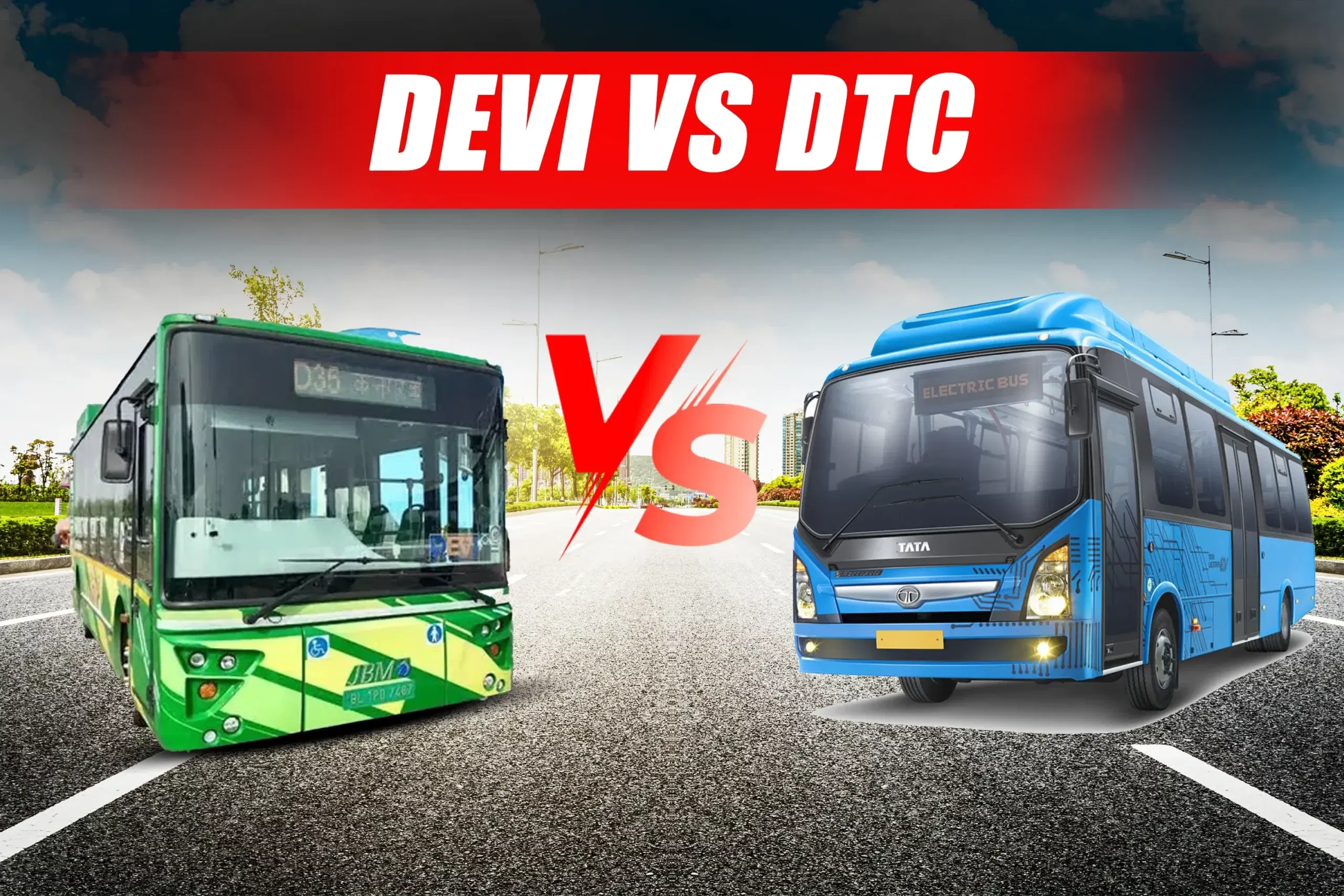Delhi’s public transport scene has been changing fast. Anyone who’s spent time on city roads knows that old DTC buses have been a staple for decades, shuttling millions every day. They’ve been reliable, yes, but let’s be honest, they’re starting to feel a bit dated. Enter the New DEVi Buses, electric machines aiming to make rides smoother, cleaner and a bit more pleasant for the regular commuter. This is not just a story about buses; it’s about the evolution of commercial vehicles in one of India’s busiest cities.
Brands and Models
The DTC fleet isn’t just a random collection of buses. It’s mostly from familiar Indian brands. Tata Motors provides models like the Tata Starbus and the Tata Urban Electric Bus, while Ashok Leyland contributes with the Circuit S. They are all classified as commercial buses, serving city routes, intercity connections and smaller feeder lines. Many older DTC buses run on CNG, which keeps them relatively green, though nothing like the emissions free electric buses now rolling out.
On the other side, the DEVi initiative brings electric buses from PMI Electro Mobility and JBM Group. PMI buses are compact, with 23 seats, special provisions for women, wheelchair access and low floors that actually make getting in less of a gymnastics exercise. JBM Group’s buses are churned out in a huge facility in the Delhi NCR region, they’re kind of like the mass produced heroes of the electric bus world. Together, these buses are pushing Delhi closer to a fleet of truly sustainable commercial vehicles.

Design and Comfort
Walk inside an old DTC bus, and you’ll immediately notice the no frills design. Seats are basic, legroom is minimal and interiors are more functional than anything else. DEVi commercial buses, however, feel like a step up. Ergonomic seating, wider windows, low floors and spaces for wheelchairs make commuting more humane. There’s even a “kneeling” feature in some buses that lets older passengers hop on without pulling a muscle. It’s a small change, but it makes a big difference on a Monday morning when everyone’s tired.
Performance and Engine
The old buses mostly ran on CNG, which is better than diesel but still not perfect. Electric DTC buses like the Tata Urban Electric Bus offer zero emissions, though their range isn’t massive. DEVi commercial buses can go anywhere from 120 km to 300 km per charge depending on the model. Acceleration is smoother, maintenance is simpler and they don’t make that familiar choking diesel smell on crowded streets. For a city that struggles with air quality, these buses are kind of a game changer.
Technology and Accessibility
Old DTC buses had manual ticketing and often, if you weren’t paying attention, you had no clue where your stop was. DEVi buses fix all that with smart ticketing, GPS, real time displays and announcements. It’s still not perfect, sometimes the screen glitches, or the announcement cuts off mid sentence but that’s kind of charming in a human way. Accessibility has improved too, with spaces for wheelchairs and easier boarding.
Environmental Impact
Even the older CNG buses helped reduce emissions compared to diesel, but DEVi commercial buses take it further. Zero tailpipe emissions, quieter operation and cleaner streets. These buses are not just commercial vehicles, they’re like little green warriors on Delhi’s roads. Okay, maybe that’s dramatic, but you get the idea.
The Bottom Line
So, what’s really changed? Old DTC buses like the Tata Starbus and Ashok Leyland Circuit S were workhorses, they got the job done. DEVi buses, manufactured by PMI Electro Mobility and JBM Group, are a glimpse of the future. They are more comfortable, eco friendly and tech savvy, turning the daily grind of commuting into something slightly less miserable. For the city, it’s a step toward a modern fleet of commercial buses and commercial vehicles that won’t choke you with smoke every morning. And yes, they still have that typical Delhi chaos, just with less diesel smell.
For more articles and news, stay updated with 91trucks. Subscribe to our YouTube channel and follow us on Facebook, Instagram, and LinkedIn for the latest videos and updates from the automotive world!








